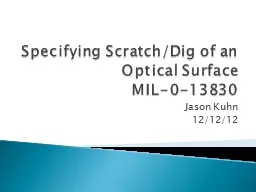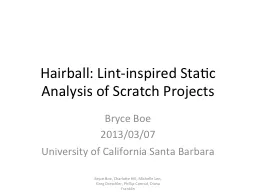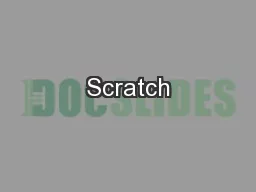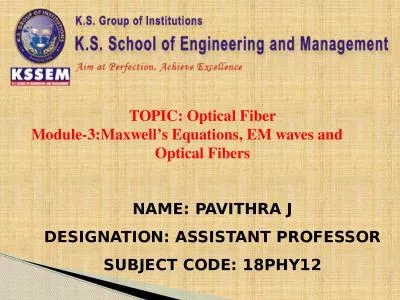PPT-Specifying Scratch/Dig of an Optical Surface
Author : faustina-dinatale | Published Date : 2018-09-30
MIL013830 Jason Kuhn 121212 Two numbers are always specified ie 6040 The first number specifies the maximum width of scratches on the surface in tenths of a micron
Presentation Embed Code
Download Presentation
Download Presentation The PPT/PDF document "Specifying Scratch/Dig of an Optical Sur..." is the property of its rightful owner. Permission is granted to download and print the materials on this website for personal, non-commercial use only, and to display it on your personal computer provided you do not modify the materials and that you retain all copyright notices contained in the materials. By downloading content from our website, you accept the terms of this agreement.
Specifying Scratch/Dig of an Optical Surface: Transcript
Download Rules Of Document
"Specifying Scratch/Dig of an Optical Surface"The content belongs to its owner. You may download and print it for personal use, without modification, and keep all copyright notices. By downloading, you agree to these terms.
Related Documents














